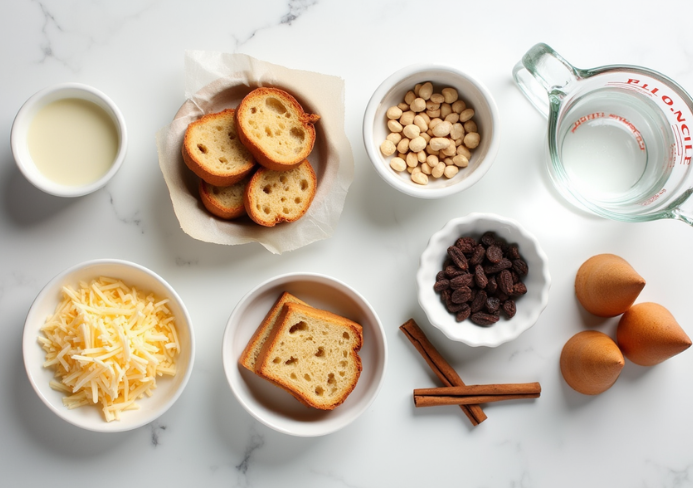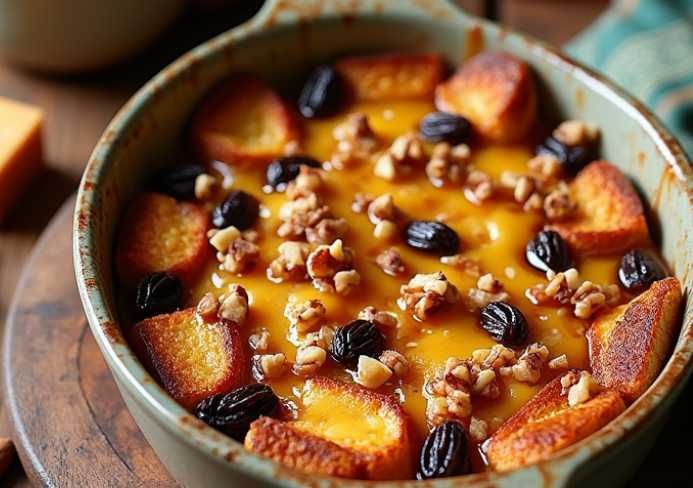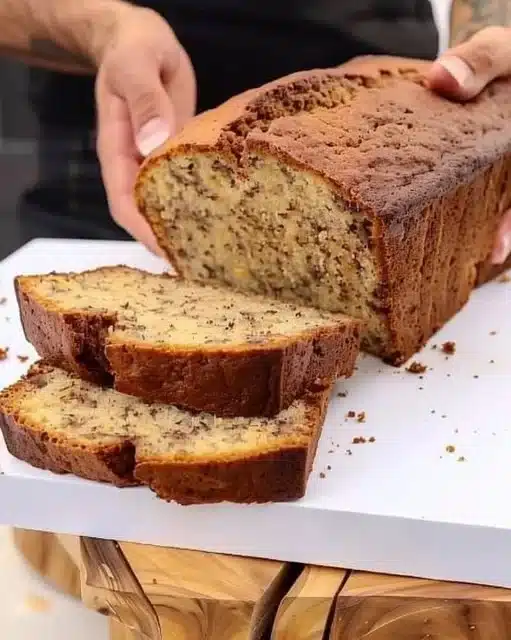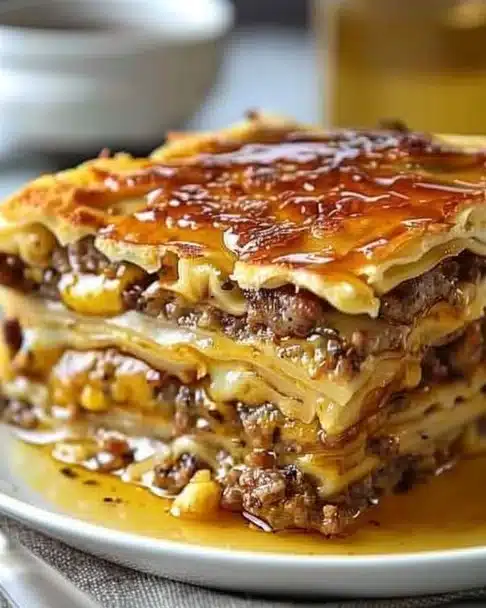How to Make Capirotada: A Mexican Lenten Dish
Capirotada is a beloved Mexican bread pudding, traditionally made during Lent—a period of reflection, sacrifice, and meatless meals. This rich, sweet, and sometimes savory dish is more than just a dessert; it’s a culinary symbol of faith, family, and history, passed down through generations.
Table of Contents
🕰️ What is Capirotada?
Capirotada is a traditional Mexican Lenten dish that blends toasted bread, raisins, cheese, nuts, and a spiced syrup made with piloncillo (unrefined cane sugar). Though it may resemble a dessert, it is usually served as part of a meatless meal during Semana Santa (Holy Week).
This rustic and comforting dish carries deep Catholic symbolism:
- Bread represents the Body of Christ.
- Syrup made from piloncillo and spices symbolizes His blood.
- Cloves for the nails, cinnamon sticks for the cross, and cheese as purity.
In fact, Capirotada is often seen as a spiritual food, not just a recipe.
🌎 Origins and Cultural Roots
Historians trace the dish back to 16th-century Spain, where it was originally a savory meat dish. It evolved in colonial Mexico into a sweet bread pudding due to fasting practices during Lent, which restricted meat consumption.
Over time, ingredients were replaced, adapted, and influenced by local availability and tastes. The religious symbolism remained, and capirotada became a treasured family tradition.
You can learn more about the key ingredient, piloncillo, and how to use it, in traditional Mexican cooking.
🌶️ Regional Variations of Capirotada
One of the beautiful aspects of capirotada is its regional diversity across Mexico. Families tailor the dish to their tastes and traditions:
- Northern Mexico: Uses cheddar cheese, peanuts, and raisins.
- Southern Mexico: May include bananas, coconut, and mango.
- Some versions even use milk, condensed milk, or evaporated milk for added richness.
Every household has its own “secret recipe,” often passed down through generations.
🧂 Traditional Ingredients & Their Symbolism
Here’s a list of commonly used ingredients and what they represent:
- Bolillo (Mexican bread) – represents the Body of Christ
- Piloncillo syrup – symbolizes His blood
- Cinnamon sticks – the cross
- Cloves – nails on the cross
- Raisins – tears of Mary
- Peanuts or nuts – strength and sacrifice
- Cheese – purity and a unique savory contrast
Tip: If piloncillo is hard to find, you can substitute it with dark brown sugar or molasses, though the flavor will be slightly different.
🔪 Tools and Prep Tips Before Cooking
You don’t need fancy tools to make capirotada, but here’s what helps:
- 9×9 baking dish
- Saucepan (for the syrup)
- Oven (to toast the bread)
- Cutting board & knife
- Cooking spray
Before layering, toast the bread slices until lightly golden and crisp. This helps prevent sogginess during baking.
🌟 Ingredient Spotlight: Piloncillo
Piloncillo is unrefined whole cane sugar, usually sold in cone shapes. It has a deep molasses-like flavor and is essential for authentic syrup.
- Found in Latin markets or online
- Can be substituted with dark brown sugar in a pinch
- Adds depth and traditional flavor
👉 Learn more in this guide to piloncillo and how to cook with it
👩🍳 How to Make Classic Capirotada: Step-by-Step
Here’s how to prepare the most traditional version:
Ingredients:
- 6 cups water
- 3 piloncillo cones
- 3 cinnamon sticks
- 3 whole cloves
- 1 cup raisins
- ½ cup roasted, salted peanuts
- 12 slices of bolillo or French bread
- 2 cups Monterey Jack cheese, shredded

Instructions:
- Preheat oven to 350°F (175°C).
- In a saucepan, combine water, piloncillo, cinnamon, and cloves.
- Simmer over medium heat until the syrup thickens (10–15 minutes).
- Slice and toast the bread until golden (about 20 minutes).
- In a greased baking dish, layer the ingredients:
- Bread
- Raisins
- Peanuts
- Cheese
- Repeat layers until the dish is full.
- Pour the syrup over the dish evenly to soak the bread.
- Bake for 40 minutes, until bubbly and golden.
- Let it cool slightly before serving. Enjoy warm!
🎨 Customizing Your Capirotada
Feel free to get creative! Here are popular variations:
- Add shredded coconut or dried fruit like prunes
- Use cheddar, queso fresco, or vegan cheese
- For a richer dish, try condensed or evaporated milk
- Add bananas or mango for a tropical twist
- Substitute gluten-free bread or make it dairy-free
For a plant-based option, check this vegan-friendly version of capirotada.
⚠️ Common Mistakes to Avoid
- Don’t use fresh bread – it will turn mushy.
- Don’t skip toasting – toasted bread holds syrup better.
- Layer evenly – too much of one ingredient in a spot can ruin texture.
- Avoid overseasoning – the syrup should be sweet, not spicy.
🍽️ How to Serve Capirotada
Capirotada can be served:
- Warm – straight from the oven, the cheese is gooey.
- Cold – after chilling, it becomes more pudding-like.
- As a standalone dish, or paired with:
- Mexican hot chocolate
- Café de olla
- Atole
Optional toppings: whipped cream, cajeta drizzle, or chopped nuts.
🧊 Storing and Reheating Capirotada
- Store covered in the refrigerator for up to 5 days.
- To reheat:
- Use oven for best results (10 mins at 300°F)
- Microwave for convenience (1–2 mins)
- Can be frozen in portions and reheated as needed.
❓ FAQs
What is capirotada made of?
It includes toasted bread, piloncillo syrup, raisins, nuts, and cheese.
Is capirotada served hot or cold?
Traditionally warm, but it can be enjoyed cold too.
Is capirotada a dessert or main dish?
It’s mostly eaten as a dessert, but also served as a meatless main during Lent.
What bread is used in capirotada?
Bolillo is traditional, but French bread also works well.
Can capirotada be frozen?
Yes! Store in freezer-safe containers and reheat in the oven.
✍️ Final Thoughts
Capirotada is more than just food—it’s a ritual, a memory, and a faith-filled tradition baked into every layer. Whether you’re discovering it for the first time or rekindling old memories, this dish offers a beautiful way to celebrate Lent with meaning, taste, and community.
PrintHow to Make Capirotada: A Mexican Lenten Dish
- Total Time: 1 hour
- Yield: 8 servings
- Diet: Vegetarian
Description
This baked Capirotada blends toasted bolillo bread with raisins, roasted peanuts, and Monterey Jack cheese, all soaked in a warm spiced piloncillo syrup. A traditional and satisfying Mexican dessert.
Ingredients
- 6 cups water
- 3 piloncillo cones
- 3 cinnamon sticks
- 3 whole cloves
- 1 cup raisins
- ½ cup roasted, salted peanuts
- 12 slices of bolillo or French bread
- 2 cups Monterey Jack cheese, shredded
Instructions
- Preheat oven: Set oven to 350°F (175°C).
- Make the syrup: In a saucepan, combine water, piloncillo, cinnamon sticks, and cloves. Simmer over medium heat for 10–15 minutes until slightly thickened into a syrup.
- Toast the bread: Slice the bolillo or French bread and toast in the oven or skillet until golden (about 20 minutes).
- Layer the ingredients: In a greased baking dish, create layers in the following order: toasted bread, raisins, peanuts, and shredded cheese. Repeat layers until all ingredients are used.
- Soak with syrup: Slowly pour the warm syrup evenly over the layered ingredients, making sure the bread is well soaked.
- Bake: Bake uncovered for 40 minutes, until the top is golden and bubbly.
- Cool and serve: Let rest slightly before serving. Enjoy warm as a dessert or sweet brunch option.
Notes
You can substitute Monterey Jack with queso fresco or a blend of cheeses. For added richness, drizzle with sweetened condensed milk before baking. Serve with café de olla or vanilla ice cream.
- Prep Time: 20 minutes
- Cook Time: 40 minutes
- Category: Dessert
- Method: Baked
- Cuisine: Mexican







